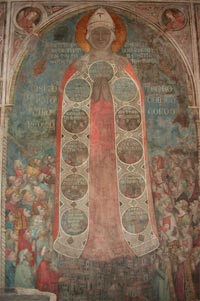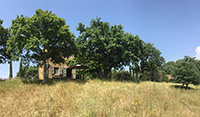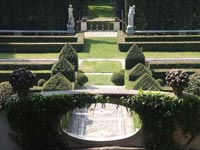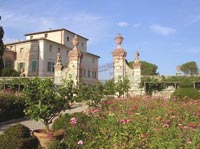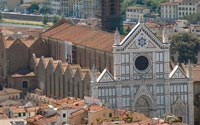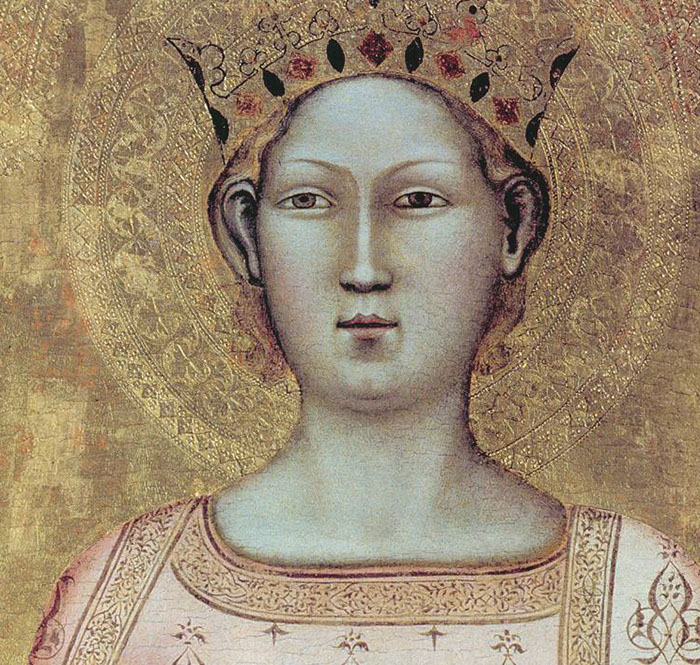 |
| Bernardo Daddi, St Catherine of Alexandria with Donor and Christ Blessing (detail), , c. 1340, Museo dell'Opera del Duomo, Florence |
Bernardo Daddi |
| Bernardo Daddi (active ca. 1280-1348) was one of the most important Florentine painters of the first half of the fourteenth century. It is now generally thought that he was taught by Giotto himself, and he remained closely acquainted with his workshop and following. Florentine painter, the outstanding painter in Florence in the period after the death of Giotto (who was possibly his teacher). Daddi ran a busy workshop specializing in small devotional panels and portable altarpieces. His signed and dated works include a polyptych of The Crucifixion with Eight Saints (Courtauld Institute, London, 1348) and the works attributed to him include frescos of the Martyrdoms of SS. Lawrence and Stephen in Santa Croce. His style is a sweetened version of Giotto's, tempering the latter's gravity with Sienese grace and lightness. He favoured smiling Madonnas, teasing children, and an abundance of flowers and trailing draperies. His lyrical manner was extremely popular and his influence endured into the second half of the century.
His style was rather sweeter and less austere than Giotto's, tempering the latter's gravity with a new grace and refinement. The typically tender and expressive gestures, the subtle colour harmonies and above all the attention to detail are all characteristic of his work. |
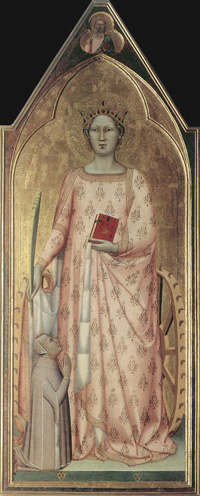 Bernardo Daddi, St Catherine of Alexandria with Donor and Christ Blessing (detail), , c. 1340, Museo dell'Opera del Duomo, Florence Bernardo Daddi, St Catherine of Alexandria with Donor and Christ Blessing (detail), , c. 1340, Museo dell'Opera del Duomo, Florence |
| This eloquent depiction of the Crucifixion was painted early in Daddi's career, when he was deeply under the spell of Giotto. It dates about 1325–30. The Virgin and Saint John are shown seated humbly on the ground in poses of mourning that derive from Roman sarcophagi. This painting was originally the right shutter of a diptych for private devotion. |
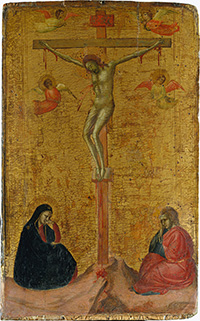 Bernardo Daddi, The Crucifixion, ca. 1325–30, tempera on wood, gold ground, The Metropolitan Museum of Art, New York. |
|
The Madonna of Mercy (Misericordia) was painted by the Bernardo Daddi school in 1342 in the building now dedicated to the Bigallo orphanage, and which had been the Misericordia Confraternity. Across from it the newer headquarters of the Misericordia still dispense medical care and run ambulances. The members of the Misericordia had laid the first stone of Florence's Cathedral seven hundred years ago. Every Maundy Thursday the Cardinal of Florence washes the feet of eleven Misericordia workers. This fresco is one of the most important keys for unlocking the vocation and for deepening the meaning of Florence. The Madonna wears a crown like that of the Empress Matilda, with the saving Tau in blood, and it is she who protects the city with the weapons of the acts of mercy as Jesus had listed them in the Gospel, these acts being given in the medallions of her mantle that contain these words. |
|
|
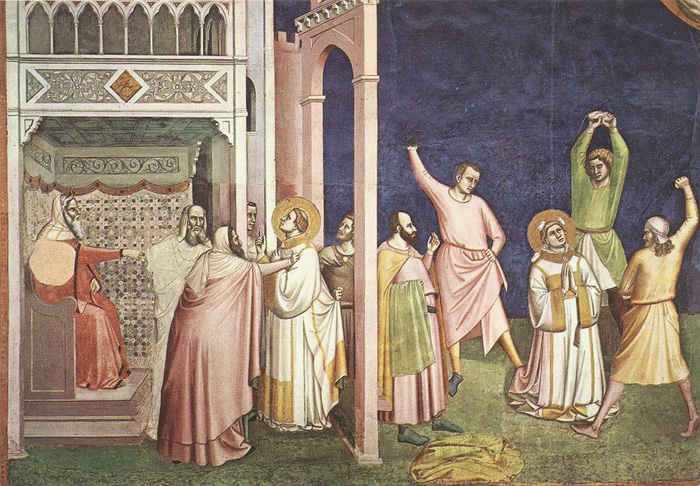 |
||
Bernardo Daddi, The Martyrdom of St Stephen, 1324, fresco, Santa Croce, Florence
|
||
The typically tender and expressive gestures, the subtle colour harmonies and above all the attention to detail are all characteristic of his work. |
||
|
||||
|
||||
Podere Santa Pia |
Podere Santa Pia, giardino |
Podere Santa Pia |
||
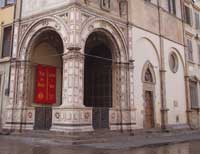 |
||||
Villa I Tatti |
Loggia del Bigallo, Florence |
|||
 |
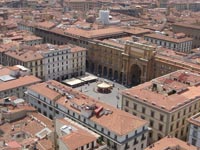 |
|||
Florence, Duomo Santa Maria del Fiore |
Florence, Santa Croce |
Florence, Piazza della Repubblica |
||

